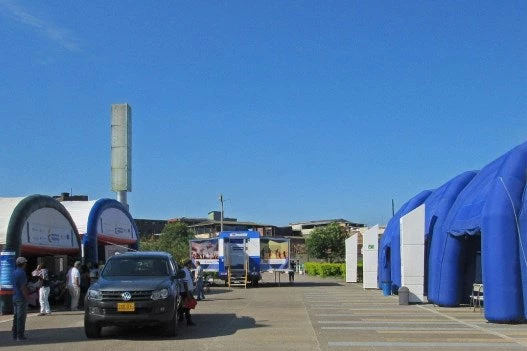
The end of the peace negotiations between the Government of Colombia and the Revolutionary Armed Forces of Colombia (FARC) reflects an important political achievement in the country’s recent history. This agreement comes after over 52 years of war - a conflict which has left over 8 million victims, and is estimated to have resulted in at more than 220,000 deaths and over 7 million internally displaced persons (the highest in the world according to the UN). Ensuring justice to victims of the conflict is one of the agreement’s six key points. The development and implementation of effective transitional justice programs and policies in the coming years will be critical to truly achieving peace in Colombia.
A number of such efforts are already underway. Over recent years, in an endeavor to enable victims living in marginalized communities with low levels of state presence to exercise their rights to justice, truth, and reparation, the Ministry of Justice, the Public Defender’s Office ( Defensoría del Pueblo), and the National Unit for Victims have worked together to operate a Mobile Victims Unit ( Unidad Móvil de Atención y Orientación a Víctimas, UMAOV). The UMAOV is a vehicle that visits municipalities and acts as a “one-stop shop”, providing a range of services to victims including the provision of information on victims’ rights, legal aid to enable filing declarations of victimhood and appeals with the State, and the provision of updated and personalized information about where victims’ cases stand in the bureaucratic process of enrollment and implementation of a variety of public reparation, assistance, and attention services. To date, the unit has served more than 60,000 people.
To help inform government policy for victims moving ahead, a joint World Bank-CAF team is currently working with the three UMAOV implementing entities to carry out an impact evaluation of the 2016 route. The evaluation uses a randomized phase-in method in which 30 municipalities have been assigned to receive services in the first half of the year (composing the treatment group) and 30 municipalities have been assigned to receive UMAOV services in the latter half of the year (composing the control group). To improve balance and also protect against risks of unforeseen route order changes due to ongoing conflict, prior to random assignment, municipalities were paired based on preexisting characteristics and then within each pair municipalities were randomly assigned to either the treatment or the control groups.
Upon completion of data collection in December 2016, the evaluation will have collected panel data from over 2,000 victims of the armed conflict and 1,500 community members which will then be analyzed to provide insights on the short term impacts of the UMAOV program. The evaluation is expected to help address questions about the efficacy of the UMAOV’s victims’ services in reconstructing life plans and the social fabric of victims in their communities and ensuring their attainment of their rights to truth, justice, and reparations. These insights will be a timely resource for the Government of Colombia as they work to ensure that their policies and programs can achieve just that, especially in light of the peace agreements, which include a focus on the creation of an integrated system of truth, justice, reparation and no repetition for victims of the armed conflict.






Join the Conversation